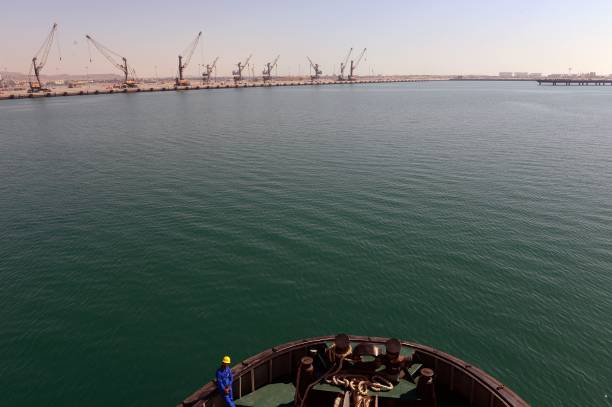As trade at the global level is reshaping economies and geopolitical dynamics, strategic maritime assets have become the main parts of the national development plans of the countries. The Chabahar Port, which is on the coast of the Gulf of Oman, has caused people to be interested in it because it has the potential to change the trade connectivity of India with Central Asia, Afghanistan, and so on. Chabahar Port, situated on the southeastern coast of Iran by the Gulf of Oman, is a critical maritime infrastructure of significant strategic importance.
Iran's only oceanic port is the one and a half, which is the door to the whole of Central Asia, Afghanistan, India, and so on, and is the key to developing the economic hub of the region. Chabahar Port is far away from the Strait of Hormuz; thus, it is a separate route for trade that does not pass through the congested and geopolitically troubled Persian Gulf. Through its dry-docks and modern infrastructure, Chabahar Port is perfectly situated to enable the transit of goods and commodities; hence, regional economic integration and development are promoted. What it shows that India is fully prepared to join this project and establish its functionality with its strong desire to convenient connectivity for trade relations with Central Asia and Afghanistan and, at the same time to have, strategic access to the region.
What makes it Important for India:
India's trading roads through Central Asia and the Middle East were the main channel of its economic relations in the old days. Nonetheless, with the progress of modern transportation systems and geopolitical developments, trade routes have become obsolete these days. Hence, the drive for new methods of promoting trade links with the landlocked regions became a matter of urgency.
Location:
Chabahar Port, being located close to Central Asia, Afghanistan, and the Middle East, is of great strategic importance. Chabahar, unlike other ports in the region, gives India a transit lane that bypasses the land route through Pakistan, thus reducing the geopolitical risks involved with the overland commerce access to Afghanistan and so on.
Economic benefits:
Functioning at the Chabahar Port can boost India's international trade considerably. Chabahar Port offers a much shorter and cheaper route for trade with Central Asia and Afghanistan, thus creating new opportunities for India and the whole region to achieve economic growth and development.
Infrastructure and communication Investment:
To want Chabahar Port in full use, there is still a great need for a great amount of funds to be invested in infrastructure and communication. India has already spent a lot on this project, among them the construction of road and rail networks connecting Chabahar Port to its hinterland. Besides, the creation of Special Economic Zones (SEZs) and industrial clusters in the neighboring area raises the port's attraction as a trade hub.
Diplomatic Implications:
The strategic importance of Chabahar Port is more than just economic; it involves larger diplomatic objectives too. Chabahar Port is a project that India has been building with Iran, Afghanistan, and Central Asian countries for a long time, and this cooperation has not only increased bilateral relations between them but also acted as a counterweight to the competing powers, especially China, in the region.
Security Considerations:
The security of sea lanes and facilities at Chabahar Port is a must for the country to protect its strategic interests in the area. Given the geopolitical complexities and not-so-friendly relations, the stability and security of Chabahar Port are very hard problems to solve.
The great calculation of the benefits of Chabahar Port has to face the problems of infrastructure and geopolitics. The regular engagement of the diplomats, together with the constant investment in infrastructure development, is needed to handle these problems and fully actualize the potential of the Chabahar Port.
India's economy is totally adjusted to maritime trade, which constitutes a huge part of worldwide trade. The ship trade is of great importance for the Indian economy, as it constitutes 90% of the trade volume and 70% of the trade value.
Global Connectivity:
India's sea commerce is linked to the biggest economies in the world. The world-wide markets can be reached through the maritime channels that enable India to be part of bilateral and multilateral trade, building economic ties and facilitating the exchange of goods, services, and investments.
Energy Security:
The essence of the above statement is that India mostly imports crude oil and natural gas via sea routes to fulfill its needs. Offering the continuous availability of energy via marine trade is the main reason why India's energy security and economy are going to stay safe and balanced.
Export-Oriented Growth:
Indian exports, especially in the textiles, pharmaceuticals, automobiles, and information technology services sectors, are largely based on maritime transit. The old tools in many world states were bad in the present, but now they have access to foreign markets by sea.
Marine trade is a key factor in the progress of India's economy, global integration, energy security, and the geopolitical interests of the country. More investments in the maritime infrastructure, identifying regulatory changes, and forging strategic partnerships are the key factors for enjoying the benefits of the maritime trade, and thus, India will become the maritime leader.



.png)



0 Comments